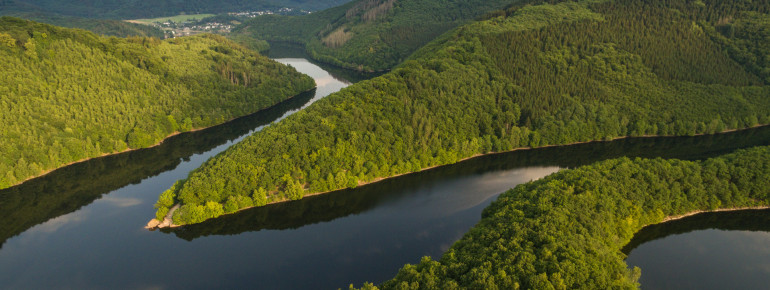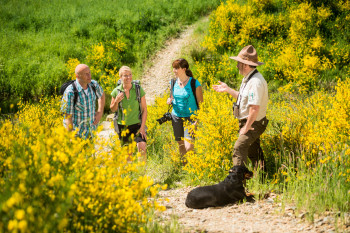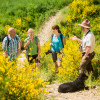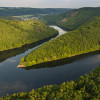Contents
Description
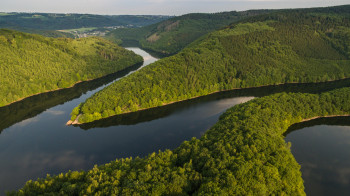
Experience woods, water and wildernis at Eifel National Park. Wildcats, black storks and more than 2,000 other endangered animals and plants find a safe habitat at this 110 sqare metre area. The park features beautiful views of the lakes Rur, Ober, and Urftsee.
Explore the pristine nature on your own on 240km/149mi of hiking trails. Well signposted themed circular trails lead you through the park. If you want to learn more about your surroundings, there are usually free guided hikes available. If you'd rather discover the national park on a saddle, you can either use the numerous bike trails, or the 65km/213mi of equestrian trails. If you come in winter, you can even explore Eifel National Park on three different cross-country ski tours.
The national park centre is located on the premises of the former NS-Ordensburg Vogelsang, which is nowadays an interesting attraction as Vogelsang IP - Internationaler Platz. If you are looking for something special, you might try one of the star-gazing events, or check out the Bird Watching Stations. Wildnernis camps are offered for children during the summer holidays, and there are special tours and events for families. Other activities include a summer toboggan or a visit to the historic mustard mill.
Historical Information
Eifel National Park is relatively young, and therefore internationally regarded as a development national park. Founded in 2004, it is the 14th German national park, and the first in North Rhine-Westphalia. To get beyond development category, the park has until 2034 to leave at least three quarters of its area entirely to nature. Hence, parts of its wilderness are still nascent.
Interesting facts
- Eifel National Park is the the best rated tourist attraction in North Rhine-Westphalia.
How to get there
The best way to enter the national park is through the so-called Nationalpark-Tore (national park gates) in Simmerath-Rurberg, Schleiden-Gemünd, Heimbach, Monschau-Höfen and Nideggen, where you can find information houses.
If you travel on public transport, take a trail to Kall or Heimbach. From there, buses go to various points in and around the national park.
By car, you can get to the national park on motorways A1 (from the east), A4 (from the north), A44 (north-west), or E42/A27 (from the west through Belgium). The national park is signposted from the motorways.


